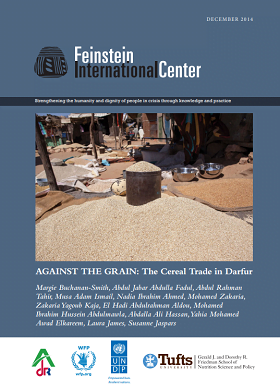Against the Grain: The Cereal Trade in Darfur
WFP began to pilot food vouchers in Darfur in 2010 as an alternative to general food distribution. The main purpose of the voucher program is greater cost-efficiency for WFP, increased choice for beneficiaries, and strengthening of markets. It is also expected to create market multiplier effects and stimulate production (WFP, 2014c). The appropriateness and feasibility of food vouchers needs to be determined on the basis of an assessment of beneficiary needs, local food availability, market functioning, inflation, beneficiary access to markets, trader capacity, as well as the safety of financial transfers and security in general (Ibid.).
The food voucher program is now largest in North Darfur, particularly around El Fashir, where it was introduced into Abu Shouk and Al Salaam camps as well as into Saraf Omra and Kebkabiya in 2011, and into Zamzam camp in early 2014. Until 2014, the food voucher program was implemented on a relatively small scale in West Darfur. It has been piloted in Otash camp in South Darfur since 2012, but not yet implemented in other camps in South Darfur, nor in East Darfur.
